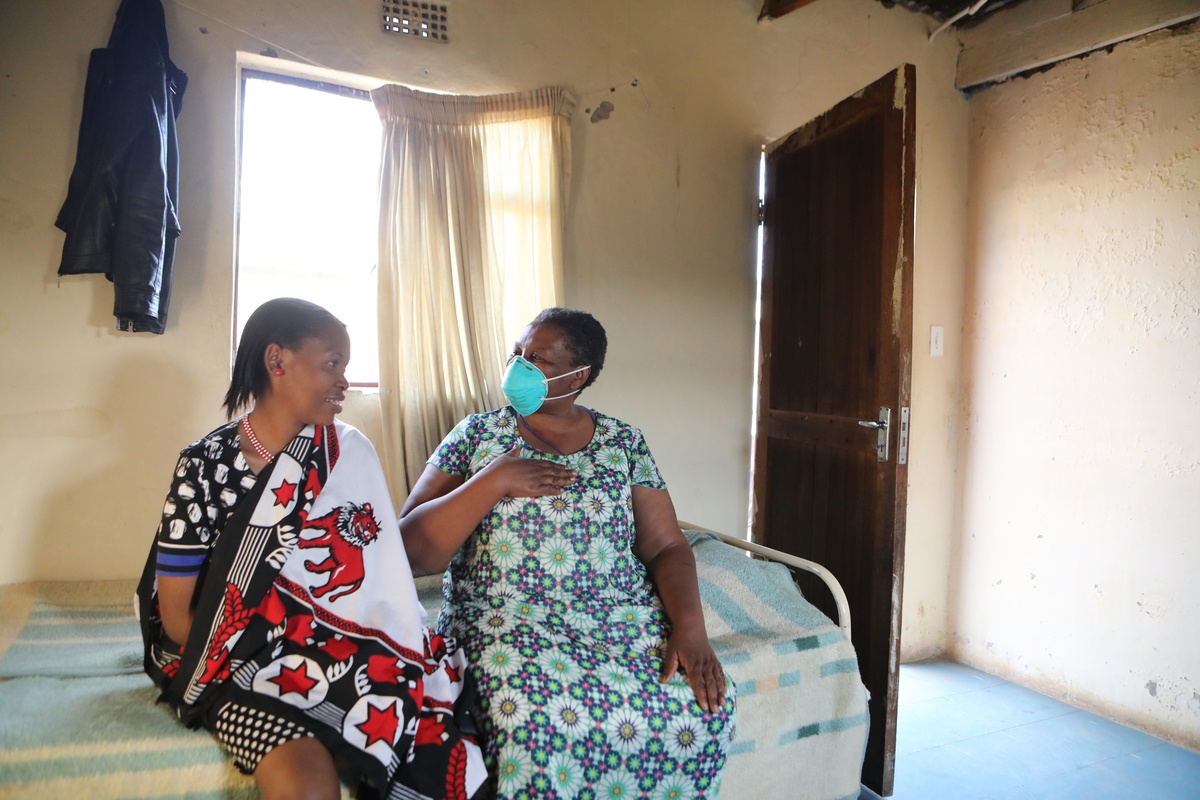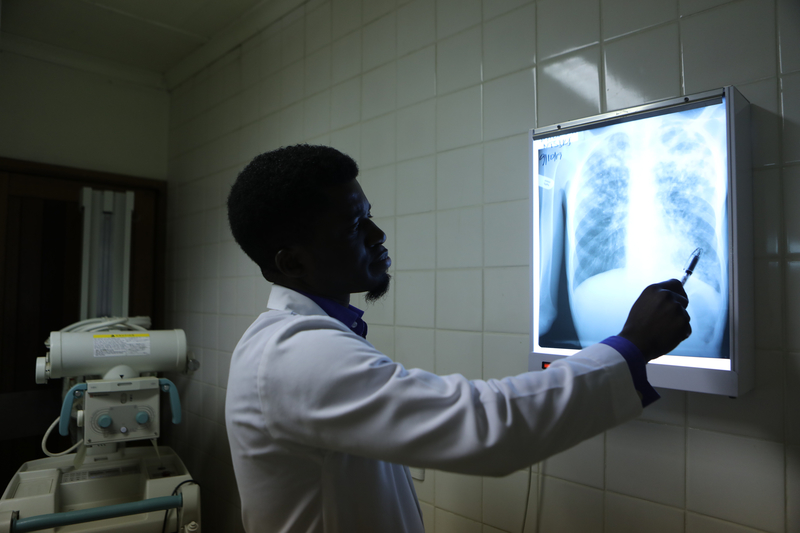Research: Understanding the Barriers Patients Face Accessing TB Screening in Lesotho
Transportation woes, long wait times among reasons driving low uptake
Posted on Aug 4, 2022

When Dr. Afom Andom, chief medical officer at Partners In Health in Lesotho, noticed blank spaces and other discrepancies in several district tuberculosis (TB) registries in 2020, he was perplexed.
As a former health reform technical advisor from 2016-2019, Andom quickly realized that local TB screening programs were not going well. He and several colleagues in Lesotho and globally sought to find out why.
In a new study, published in PLOS Global Public Health in March, Andom, who graduated from Harvard Medical School, Department of Global Health and Social Health in 2021 found that numerous barriers stood in the way of TB screening, with dire consequences.
“If we do not screen, we are not going to diagnose and thereafter treat TB,” said Andom, the study’s lead author, adding that, “Undiagnosed people live in the communities and continue to spread the disease.”
TB is one of the oldest infectious diseases, but these days it is far more prevalent in resource-poor countries and regions. Globally, around 30% of people with TB are neither diagnosed nor treated. Lesotho has the highest TB incidence globally with an estimated 654 cases per 100,000 for a population around 2 million. Due to the double burden of HIV, 62% of TB patients are co-infected with HIV. Timely detection through quality screening is need improve treatment rate, reduce mortality, and control transmission.
Patients Speak Up
For the study, Andom and his colleagues interviewed 24 patients at two facilities in the Berea district, Berea Hospital and Khubetsoana Health Center. The patients shared their experiences accessing TB services, noting numerous barriers. Many patients take public transportation; therefore, they need to wake up in the early morning to walk and catch the taxi. The taxi rides are long in distance and in time as the taxi will continuously stop and go, picking up passengers along the way. Finally, once the patients arrive at the clinic or hospital, they are greeted by long queues and can expect to wait half a day until they are seen by a clinician. One of the nurses interviewed stated, “once a patient has any TB symptoms, he/she is ordered to send the sputum to the TB clinic so this makes patients unwilling to give out all the answers when being screened.”
“We have a great problem. A person is already very sick, like I have told you that sometimes I even struggled to have food, I have already left home having not taken enough food. When you get to the facility, you get here at 8:00 am only to get consultations at 12 [noon],” a patient at Khubetsoana Health Center, who was quoted in the study, said.
Many patients shared that they hide their symptoms because they want to finish early and go back to their villages. Andom and his colleagues found that patients are sometimes screened twice in the same visit, prolonging the time they spend at a facility. Combined, these reasons indicated flaws in the screening process which leads to patients leaving the clinic or hospital undiagnosed with TB.

Karin Schermbrucker / Slingshot Media for Partners In Health
Health Workers’ Screening Burden
Makena Ratsiu, Berea District’s primary health care coordinator with Bo-mphato Litsebeletsong Tsa Bophelo—as PIH is known locally, said one aspect of the research, in particular, surprised her: health care workers find TB screening as one more task added on top of an already overwhelming scope of work, and so it does not receive adequate attention. Afom and his colleagues found that in the facilities nurses were not designated to carry out TB screening and that screening activities are shared among staff. Study authors discovered in their interviews with health care professionals that clinics and hospitals are frequently understaffed compared to patient demand; TB screeners lack adequate training; and multiple individuals are asked to screen, although it is not their primary role. “Ultimately, this means patients living with undiagnosed TB subsequently suffer,” said Ratsiu.
Ratsiu said this has been an eye opener for her and she can see where she needs to apply more effort when she visits various facilities for mentorship. To improve TB detection, all healthcare workers need TB education to properly screen for TB. TB screening education is a must. Additionally, Ratsiu mentioned that there should be follow-ups to see whether screening is done according to guidelines.
Low Screening Rates
Andom and colleagues found that of the 70,393 visitors from the two facilities studied, only 22% of hospital patients and 48% of health center patients were screened for TB. They discovered that out of those who were asked about TB symptoms, only 2% revealed their TB symptoms. This is a very low number in a country with the highest TB statistics. The data reveals that there is a lot of work to be done to improve TB screening, researchers said, and the findings can help with the integration of better health services and also advocate for funding. “Sufficient and equitable staffing, adequate supply of essential commodities, and proper monitoring and evaluation of performance though effective data utilization is critical for eliminating TB,” Andom said.
Next Steps
As a result of the study, PIH has enhanced its support to the Ministry of Health by building capacity in TB screeners; which has resulted in identifying screening gaps and remedies to address screening needs. Additionally, PIH Lesotho has expanded TB screening and diagnostic services by equipping facilities with digital x-ray machines and teleradiology and new mini labs, along with the technical staff to manage and safeguard it.
Meanwhile, Andom is now studying the barriers of TB diagnosis and treatment and the impact of COVID-19 in TB in Lesotho. To improve TB treatment outcomes, he hopes to better understand challenges around drug adherence and other issues preventing patients from being cured.

